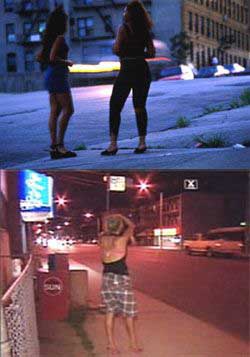 |
In 2002, a group of angry girls between the ages of twelve and seventeen blew a fuse, initiating a vicious attack on a woman who they perceived to be a hooker.
The woman was walking down the street at around midnight, dazed, shoes in hand. One member of the group of girls hanging out decided to punch the woman and knock her to the ground. Gang mentality led to more of the girls becoming involved, and the woman was kicked to the ground, at one point one of the girls even dancing on her face.
The innocent woman was, in fact, the dazed victim of a recent sexual assault. But had she been a prostitute, the actions of the girls would hardly have mitigated the crime. So how should the girls’ crime be addressed?
The three primary offenders, all under the age of sixteen, were handed a unique sentence, which the victim of their crime had a hand in determining. Through the Youth Restorative Action Project (YRAP), the consequence was constructed to foster a little empathy for the prostitutes whom the girls claimed to hate.
YRAP is a justice committee unique to Edmonton, the inspiration of Yasmina Semanac, a teenaged Serbian / Canadian who managed to escape her war-ravaged country. The YRAP panel is comprised of a group of youth who work with the courts to determine sentences for young people involved in “hate crimes and crimes of significant social issues.”
In this case, the panel called on Mark Cherrington, a youth worker involved in YRAP and Youth Menace, a radio show on the University of Alberta’s CJSR, a weekly programme hosted and produced by young offenders who’ve had contact with the criminal justice system. The programme exists to give voice to the young offender population, a group often invisible to the mainstream population.
Programmes often involve Cherrington transferring young offenders directly from the Law Courts to CJSR, where they are given the opportunity to discuss their situations, unedited and live on the air. “Somebody described [the show] as either brilliantly wonderful or a wonderful disaster depending on what show you turn on,” laughs Cherrington.
Youth Menace and YRAP are partners in crime fighting, a collaboration that allows for the opportunity for youth peer justice, which is to say justice outcomes developed and delivered by youth. The only requirement to be a panel member is that s/he is 25 years or younger and that they affirm a belief in the declaration of universal human rights.
In the case of the young women convicted of assaulting the woman on an Edmonton street, the young female offenders involved were instructed to make a two-hour radio documentary about child prostitution in their own backyards. The award-winning documentary, ![]() Children and Prostitution: Victims, All of Us, is as honest and provocative a document of child prostitution as you’re likely ever to hear, akin to the work of writer Harmony Korine, a youth himself, on Larry Clark’s film Kids, though here there is not an ounce of fiction or conjecture in the radio documentary.
Children and Prostitution: Victims, All of Us, is as honest and provocative a document of child prostitution as you’re likely ever to hear, akin to the work of writer Harmony Korine, a youth himself, on Larry Clark’s film Kids, though here there is not an ounce of fiction or conjecture in the radio documentary.
The voices represented in Victims are all children and all girls. The documentary introduces a 16-year-old pimp who chews unendingly on candy because she’s trying to get off crystal meth; and a child prostitute who met her pimp by naively waving at him across the street from the public library because she thought he was cute. Two days later, she found herself working the streets for drug money.
“This piece is the first piece from the perspective of the child,” says Cherrington. “It’s not a ministerial statement, it’s not mid- to low-level bureaucrats talking about ‘we need to’ or ‘we should’ or ‘this is adequate or inadequate.’”
Peppered with original urban music, explicit songs all written by street kids from ihuman, an inner city arts studio, Children and Prostitution: Victims, All of Us is well-executed, although the voices of the girls couldn’t be more raw and unvarnished.
“It’s a testament, not a message,” says Cherrington. “At the end it goes back to the philosophy of Youth Menace: you may agree or disagree with what’s being said, but the bottom line is that you certainly have to respect it, and it needs to be listened to.”
Reporting by Tash Fryzuk in the May issue of See magazine.